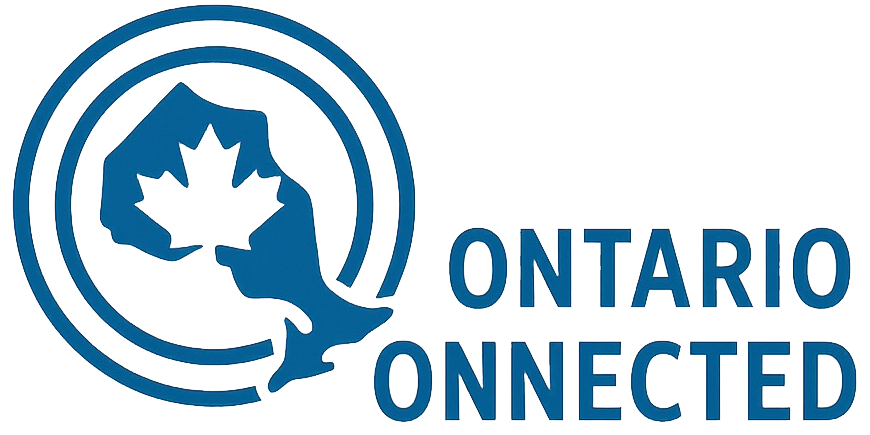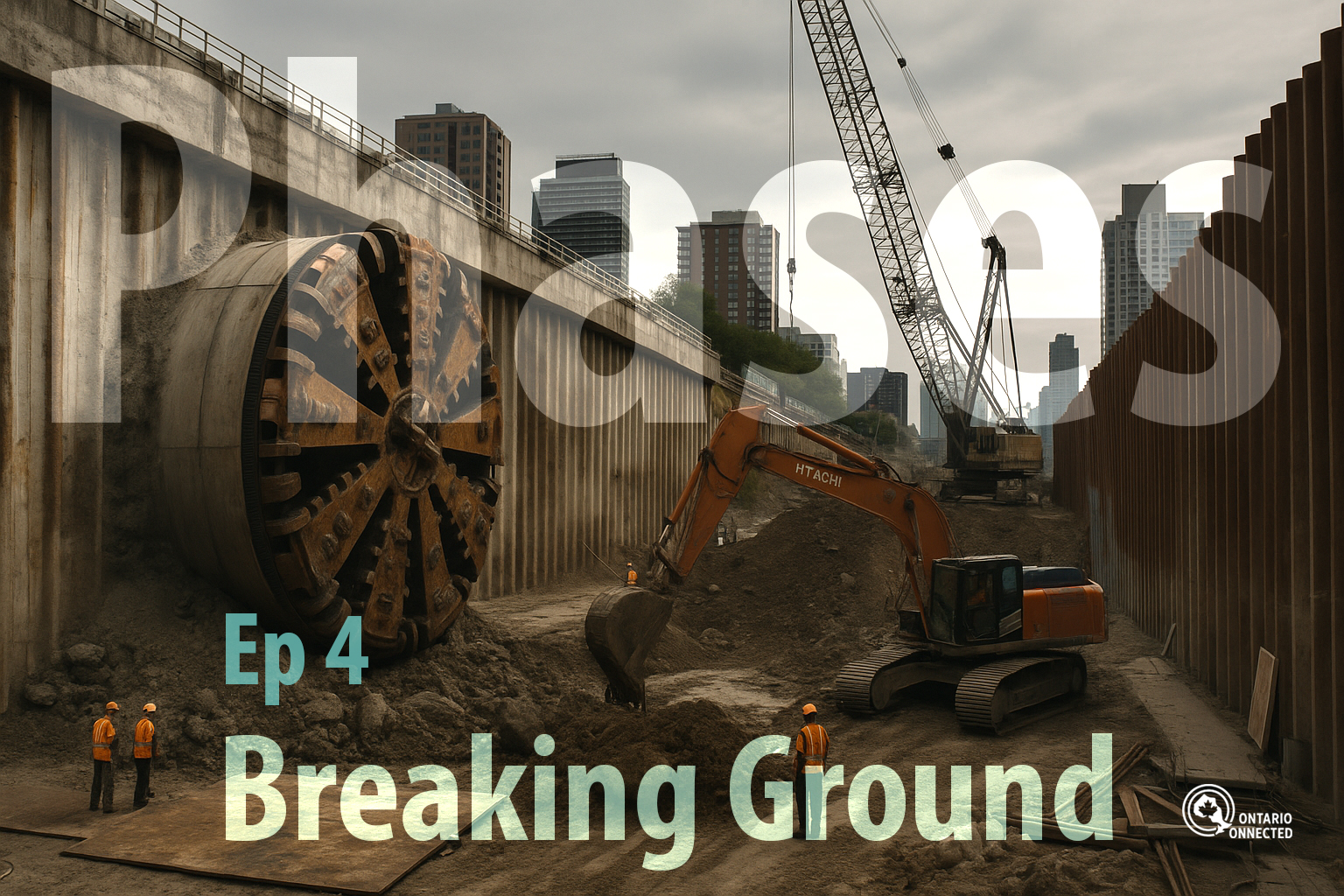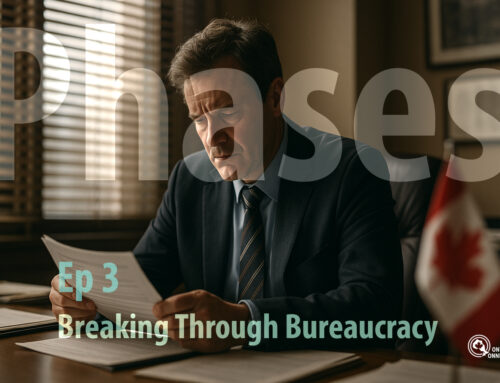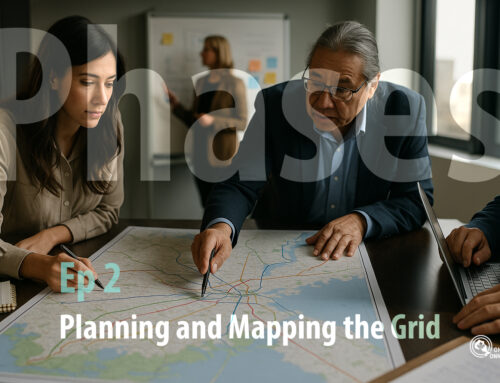Episode 4: Breaking Ground
Picture the scene: it’s early morning at a construction site outside Toronto. Spotlights cut through the mist. A crowd of workers, engineers, and reporters gathers as a massive machine — taller than a house, heavier than a jetliner — is lowered slowly into the earth. Its circular blades glint under the lights. This is the tunnel boring machine, the giant that will carve Ontario’s future one metre at a time.
The crowd erupts in applause. For the first time, Ontario Connected is no longer just drawings, speeches, or promises. It is dirt being moved, rock being cut, and a vision finally breaking through the surface.
This is the beginning of breaking ground — the moment a dream becomes something you can touch.
What It Means to Break Ground
Breaking ground is more than a construction milestone. It is a test of trust. It proves to Ontarians that the years of planning, consultation, and political wrangling are leading somewhere tangible. Shovels in soil show that Ontario Connected is real.
But breaking ground also means disruption. Streets are rerouted. Noise fills the air. Farmers see machines cross their fields. Families see crews outside their neighbourhoods. The challenge is not just to build, but to build responsibly — to create progress without leaving scars.
Digging Beneath a Province
Ontario is not an easy place to build. Rivers, lakes, wetlands, dense cities, farmland, and highways cover the land. Tunnelling beneath them demands world-class engineering.
-
Under rivers and lakes: tunnel boring machines (TBMs) are sealed like submarines, pressurised to prevent water from flooding in. Every metre is carefully monitored, with sensors protecting ecosystems above.
-
Through farmland: instead of cutting communities off, tunnelling allows farmers to keep using their land with little interruption. Crops grow above while progress moves silently below.
-
Under cities: crews work deep underground to avoid disrupting surface life. Stations are dug like surgical incisions — precise, limited, and restored after completion.
The technology exists. Cities around the world have proven it can be done. Ontario’s challenge is not “can we dig?” but “do we have the courage to start?”
Jobs, Growth, and Opportunity
Every time a tunnel is dug, jobs are created. Not just for engineers, but for electricians, welders, crane operators, labourers, safety inspectors, and thousands of skilled trades. These are good-paying, long-term jobs — the kind that support families and strengthen communities.
Beyond construction, breaking ground fuels entire industries. Steel is manufactured. Concrete is poured. Equipment is maintained. Hotels, restaurants, and shops near construction sites see new customers. Each dollar invested multiplies through the economy.
And when the system is complete, the jobs don’t end. Permanent roles in operations, maintenance, and hub development will sustain Ontarians for generations.
Balancing Disruption and Hope
Of course, no major build comes without headaches. Traffic is diverted. Businesses worry about access. Families hear noise at night. These are real concerns, and they cannot be brushed aside.
The difference with Ontario Connected must be how these disruptions are handled:
-
Transparency: communities are told exactly what to expect, when, and for how long.
-
Mitigation: work is scheduled to minimise noise and traffic impacts.
-
Compensation: businesses disrupted by construction are supported, not left behind.
-
Communication: residents have a hotline and real people to call, not automated excuses.
Disruption is temporary. But hope — once people see the first tunnels dug — is permanent.
Why This Stage Matters Most
Breaking ground is where Ontario Connected earns or loses its credibility. Ontarians have seen too many announcements that went nowhere. The sight of real construction is proof that this project is different.
It is also symbolic. When the first TBM cuts into the soil, it sends a message across the province: we are finally building.
Learning from the World
Other countries faced the same challenges.
-
In Spain, tunnelling under Madrid connected cities once thought too distant to matter.
-
In Japan, high-speed trains run through mountains and beneath cities with almost surgical precision.
-
In France, farmland still thrives above rail corridors that run invisibly below.
Ontario doesn’t need to reinvent the wheel. It needs to adopt proven technology and apply it with discipline, transparency, and care.
Closing Vision
Episode 4 is the moment Ontario proves it is ready. The machines arrive. The soil moves. The vision takes shape underground. It will not be easy. It will not be quiet. But it will be worth it.
For Ontarians stuck in traffic today, breaking ground is more than construction. It is a promise kept. It is proof that we are finally choosing to build for the next 50 years, not just the next election.
Next comes Episode 5: Building the Transit Hubs — where we step above ground to create spaces that don’t just move people, but transform communities.






Leave A Comment
You must be logged in to post a comment.